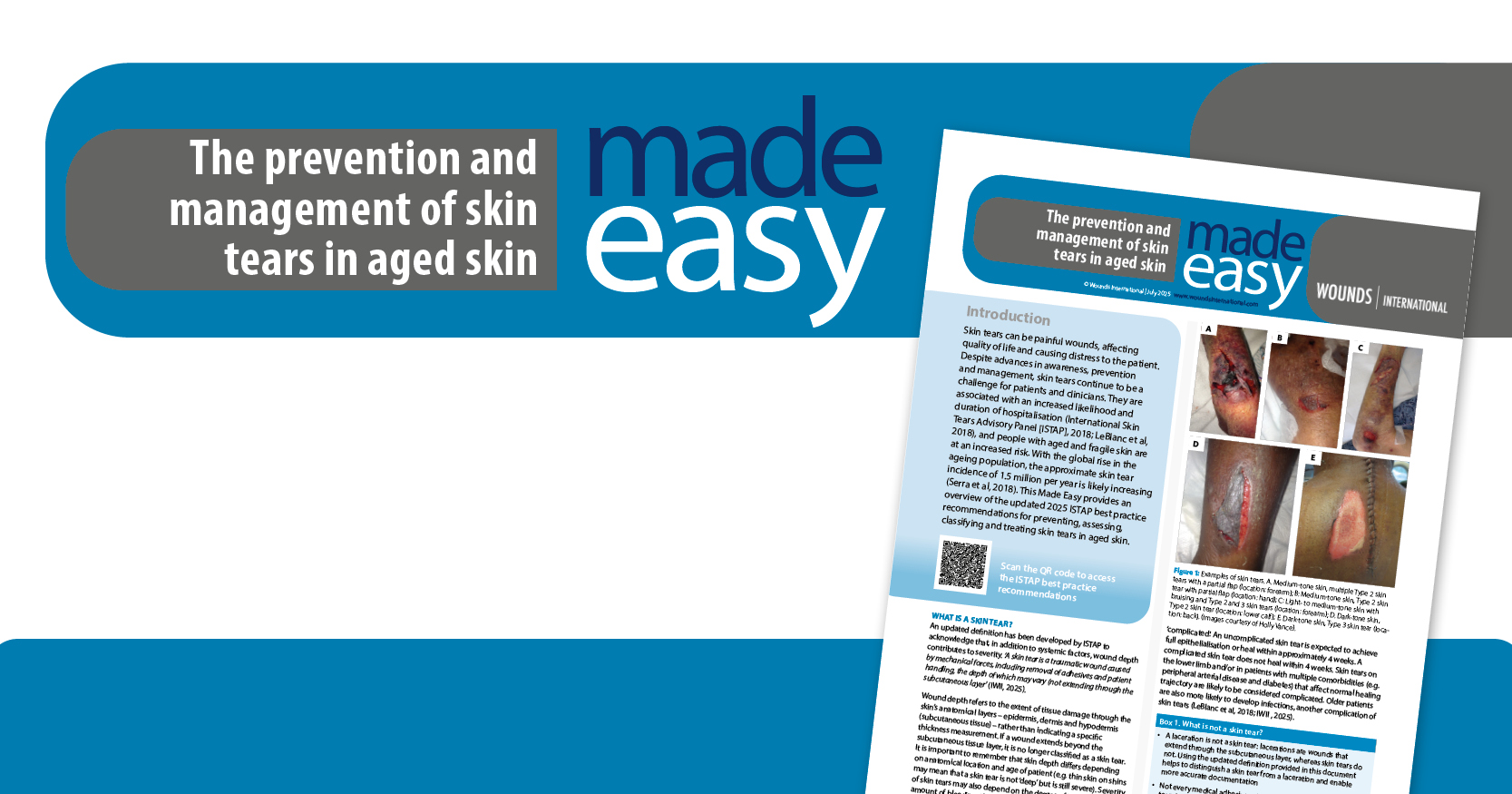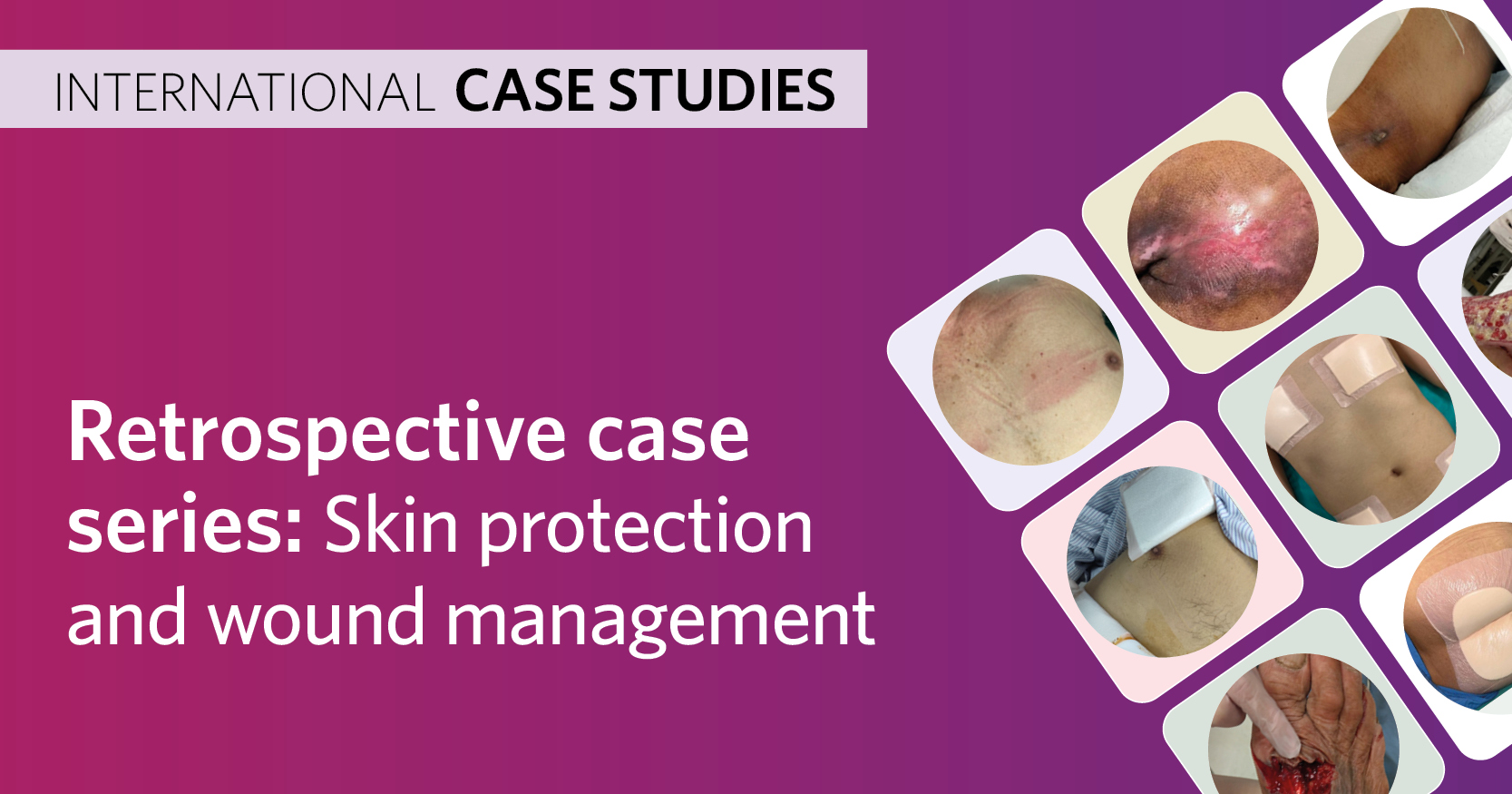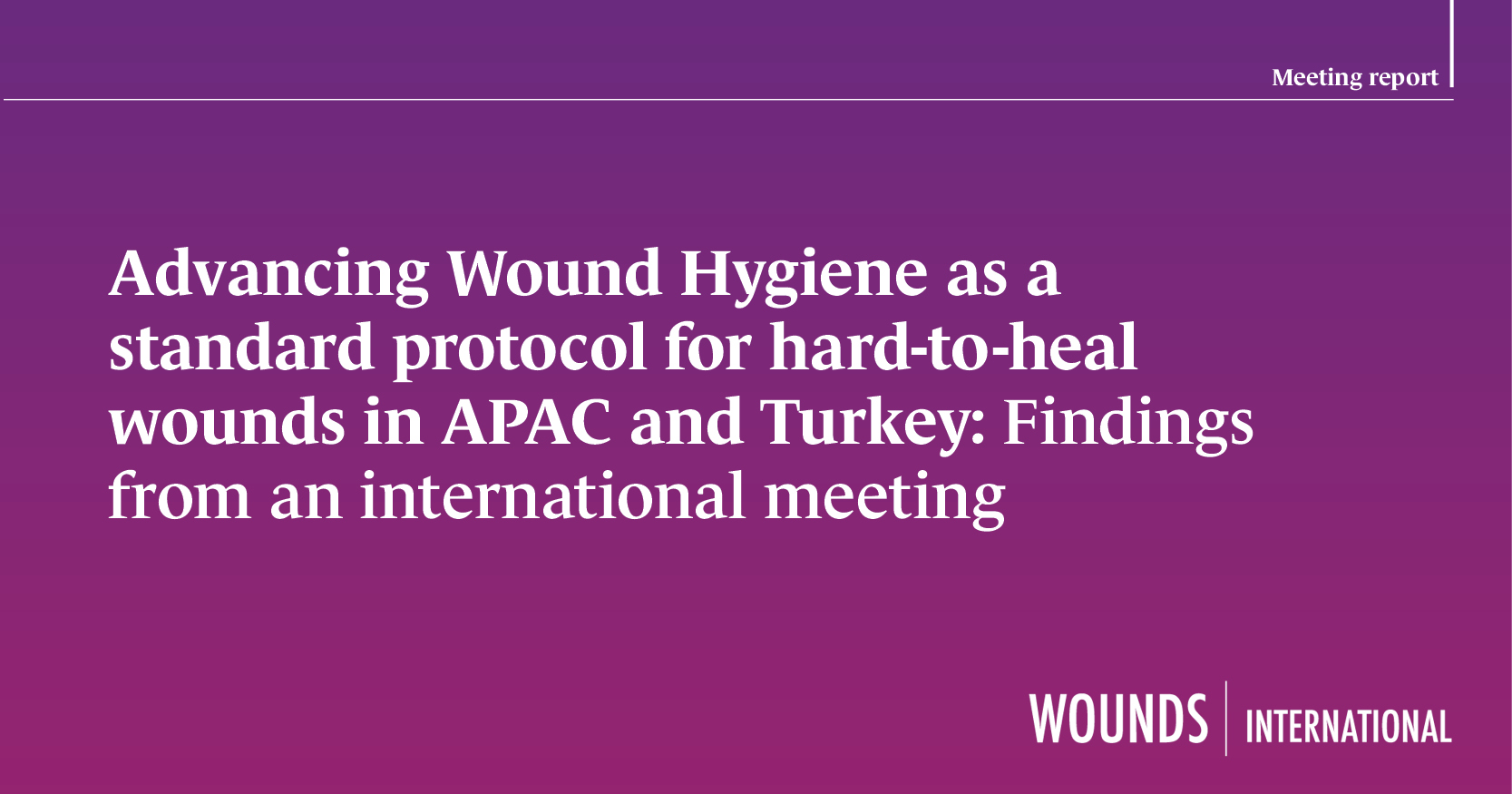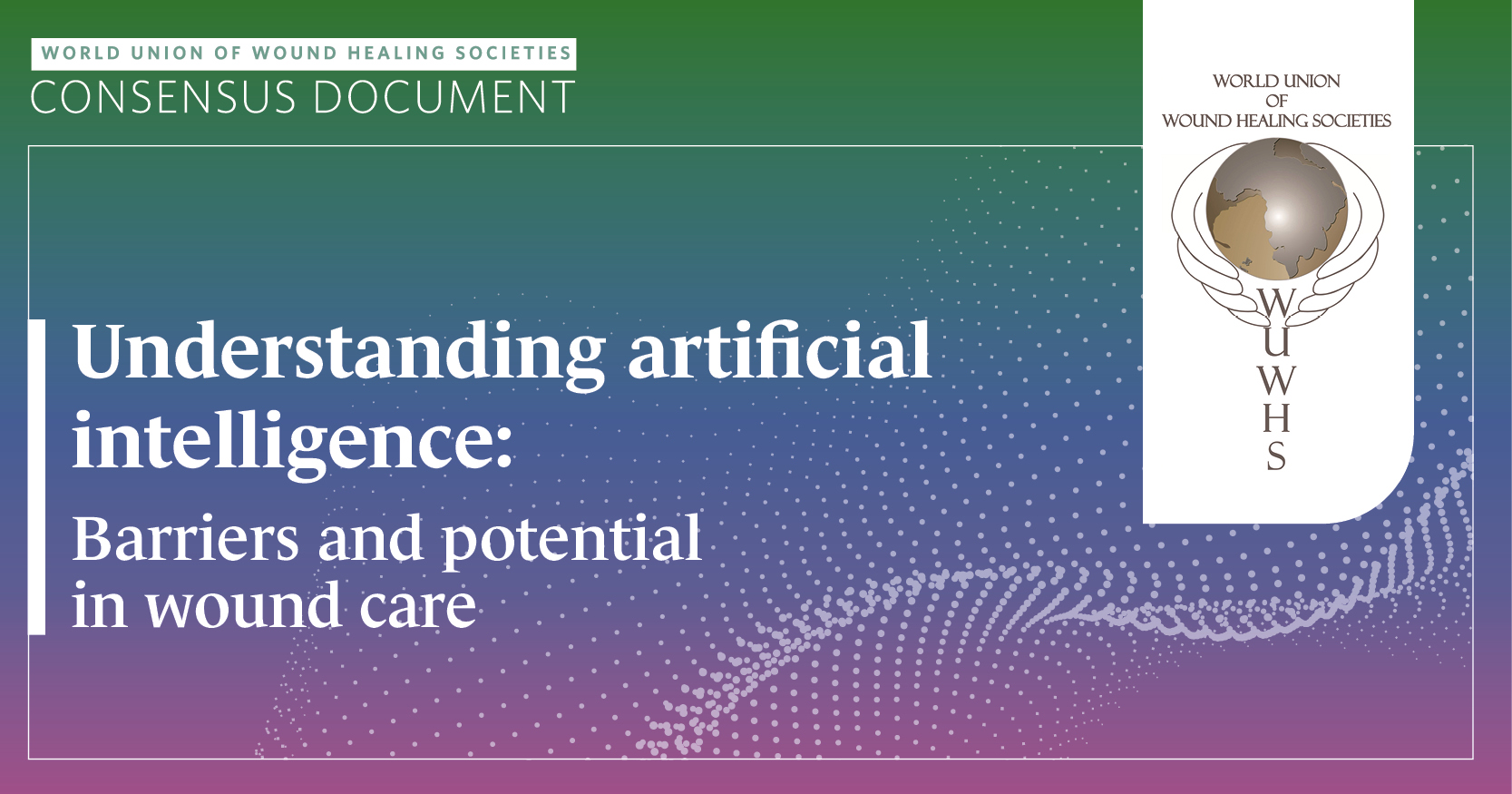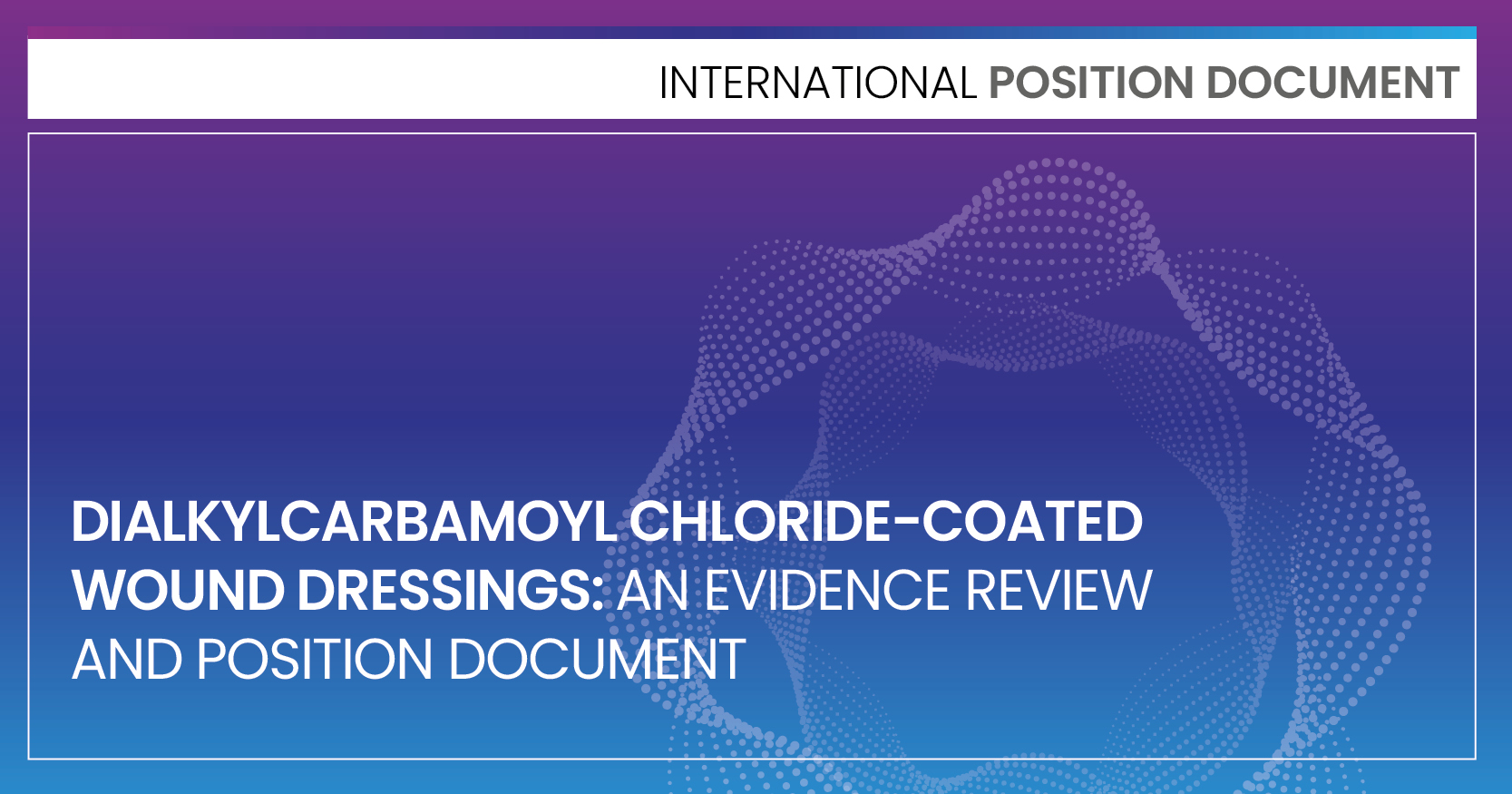What is a skin tear?
An updated definition has been developed by ISTAP to acknowledge that, in addition to systemic factors, wound depth contributes to severity. ‘A skin tear is a traumatic wound caused by mechanical forces, including removal of adhesives and patient handling, the depth of which may vary (not extending through the subcutaneous layer’ (IWII, 2025).
Wound depth refers to the extent of tissue damage through the skin’s anatomical layers – epidermis, dermis and hypodermis (subcutaneous tissue) – rather than indicating a specific thickness measurement. If a wound extends beyond the subcutaneous tissue layer, it is no longer classified as a skin tear. It is important to remember that skin depth differs depending on anatomical location and age of patient (e.g. thin skin on shins may mean that a skin tear is not ‘deep’ but is still severe). Severity of skin tears may also depend on the degree of inflammation, amount of bleeding, if any, and size of the skin tear. Examples of skin tears can be found in Figure 1, and see Box 1 for conditions that may be mistaken for skin tears.
Complicated or uncomplicated?
Skin tears can be further defined as ‘uncomplicated’ or ‘complicated.’ An uncomplicated skin tear is expected to achieve full epithelialisation or heal within approximately 4 weeks. A complicated skin tear does not heal within 4 weeks. Skin tears on the lower limb and/or in patients with multiple comorbidities (e.g. peripheral arterial disease and diabetes) that affect normal healing trajectory are likely to be considered complicated. Older patients are also more likely to develop infections, another complication of skin tears (LeBlanc et al, 2018; IWII , 2025).
Preventing skin tears
Wherever possible, prevention should be the main aim, especially in at-risk populations. At-risk patients include:
- Those at extremes of weight (bariatric, cachectic or excessively thin)
- Those with dementia or mental health conditions, particularly if they exhibit agitation or resistance to care and who have fragile or ageing skin
- Those with mobility issues
- Polypharmacy may also introduce potential medication effects, affecting cognition, gait and the skin (e.g. itching; Idensohn et al, 2019).
Al Khaleefa et al (2022) identified that provision of skincare bundles to people ≥65 years is associated with a reduction in the number of skin tears. They defined skin care bundles as being: ‘a small, straightforward set of evidence-based practices or interventions — usually three to five — that when performed collectively and consistently, have been proven to improve patient outcomes.’
To determine risk, the ISTAP skin tear risk assessment protocol should be used Table 1 presents the quick reference guide. For the full risk reduction programme see (IWII, 2025).
Optimising skin care
Washing
Standard bars of soap can be drying and disruptive to the skin’s natural acidic pH. Specific pH-balanced soaps for vulnerable skin should be used. Emollient-based products (e.g. liquid cleansers) can be used as soap substitutes (NICE, 2024). Products containing isopropyl alcohol should be avoided. Where possible, minimise frequency of bathing. Avoid hot water, as it can strip the skin’s natural barriers and increase the risk of excessive dryness. Pat the skin dry (do not rub), and use soft cloths and towels to avoid abrasion. In certain clinical settings, ‘washing without water’ may provide an efficient alternative to traditional bathing with water (Veje et al, 2020; Konya et al, 2023).
Moisturising
Moisturising is a vital part of skincare for patients with aged or fragile skin. Twice-daily application has been proven to reduce incidence of skin tears by 50% (Finch et al, 2018; Baki et al, 2021; Vuorinen and Ram, 2023). Some moisturisers are more ‘skin-friendly’ than others (i.e. gentle and pH-balanced). An ideal moisturiser has the following properties:
- Hydrates the skin and decreases trans-epidermal water loss
- Restores and maintains the lipid barrier
- Fragrance-free and hypoallergenic
- Does not block skin pores
- Affordable and easy-to-access in routine care settings (Sethi et al, 2016; NLM, 2024).
Emollient-based products that soften the skin are recommended. Additionally, products containing humectants, such as urea and glycerine, can help enhance skin hydration by drawing moisture into the epidermis (trapping) and reducing water loss through evaporation. The best time to apply moisturisers is immediately after showering or bathing to optimise skin hydration and moisture retention.
Patient self-care
Where appropriate, patients should be supported to manage their own skincare regimen, as evidence shows this can positively influence outcomes (Varga et al, 2022). Family members or carers can also be educated in skincare practices. Education should include: how to recognise age-related skin changes, the impact of medications, opportunities for self-management, and prevention and management of skin tears. Patients also need to be taught how to recognise potential risks, monitor their skin health and provide basic first aid if a skin tear does occur (e.g. stop the bleeding, clean the wound, dab the wound instead of rubbing it and avoid using standard dressings with acrylic- or rubber-based adhesives). Educating patients about the use of gentle adhesives and silicone dressings is also important.
Identification and assessment
When a patient presents with a skin tear, initial assessment should include: a holistic patient assessment, a comprehensive wound assessment (including peri-wound skin), an overall skin assessment and a risk assessment [see Table 1]. Further details and checklists can be found within the 2025 ISTAP best practice recommendations.
Skin tone assessment
Establishing a baseline skin tone is critical for the accurate identification and ongoing monitoring of skin changes and should be repeated at each holistic wound assessment (Dhoonmoon et al, 2021; LeBlanc et al, 2024). The Skin Tone Tool [Figure 2] is a validated classification tool that can help to assess changes in a patient’s normal skin tone, reducing potential biases and improving assessment accuracy (Dhoonmoon et al, 2021).
Skin changes may present differently in individuals with dark skin tones (Dhoonmoon et al, 2021). Details of further important considerations for assessing skin changes in people with darker skintones, such as the altered appearance of erythema, post-inflammatory hyperpigmentation, keloid or hypertrophic scarring, and other indicators of injury, are outlined in the 2025 ISTAP best practice recommendations.
Measurement
Though crucial for monitoring progress, skin tears can be difficult to measure in clinical practice. It may be challenging to determine where the skin flap ends and intact skin begins, or to assess the area beneath the flap. Measurement should follow local policies and guidelines. As a general rule, measure only the visible open wound bed and differentiate it from the skin flap.
Assessing flap viability is often a more useful indicator of wound status. In some cases, the wound may initially appear to be progressing; but if the skin flap becomes ischaemic or non-viable, it can alter the classification of the skin tear and significantly impact its potential to heal in a timely manner.
Skin tear classification
The ISTAP classification system [Figure 3] is recommended for the classification of skin tears (Van Tiggelen et al, 2020).
ISTAP also recommends using the skin tear decision algorithm [Figure 4] to support prevention, assessment and treatment.
Management of skin tears
Skin tears identified as acute wounds have the potential to be closed by primary intention, traditionally with sutures, staples or adhesive strips. However, using these methods can add further harm to the skin tear if disrupted (e.g. if the strip accidentally lifts off). Due to the fragility of aged skin and the typically shallow nature of skin tears, standard closure methods are not recommended.
Treatment of skin tears should aim to preserve the skin flap, maintain the surrounding tissue, gently re-position/re-approximate the flap (without stretching the skin) and reduce the risk of infection and further injury – all while considering any comorbidities that may affect healing (LeBlanc et al, 2024).
Wound care product selection
Wound care products must optimise wound healing and not increase the risk of further skin damage and infection. The ideal dressing for managing skin tears should:
- Provide absorption
- Be easy to apply and remove
- Be atraumatic and reduce pain upon removal
- Provide a protective anti-friction barrier
- Optimise the physiological healing environment (e.g. control moisture, bacterial balance, temperature, pH)
- Be flexible and mould to body contours
- Provide secure, but not aggressive, retention/adhesion
- Support extended wear time
- Optimise quality of life and cosmetic factors
- Be cost-effective (IWII, 2025).
If available, silicone dressings should be used as data indicate they improve skin tear healing compared to non-silicone, non-adherent dressings (LeBlanc and Woo, 2022; O’Brien et al, 2024). They are generally less aggressive than acrylate-based adhesives. Dressings with an atraumatic wound contact layer (e.g. lipidocolloid dressing, impregnated gauze mesh, silicone mesh) are generally a good choice for all skin tears (dry or exudative) as they maintain moisture balance for different levels of wound exudate and facilitate atraumatic removal to prevent further damage to fragile skin (LeBlanc et al, 2018; IWII, 2025).
Avoid iodine-based dressings/products (IWII, 2025; LeBlanc et al, 2018), transparent film/hydrocolloid dressings with strong acrylic- or rubber-based adhesives (McNichol et al, 2013), adhesive skin closures (IWII, 2025) and plain gauze without a silicone contact layer.
Undisturbed wound healing (UWH)
Growing evidence of the benefits of UWH supports the use of dressings with a longer wear time in appropriate patients, providing:
- Optimal wound healing
- Reduced risk of contamination/infection
- Cost-savings (Brindle and Farmer, 2019).
Brindle and Farmer (2019) recommend decreasing the frequency of dressing changes to every 5–7 days, provided it is appropriate based on wound and patient assessments. However, there are cases when promoting UWH is not suitable; for example, when moderate to high levels of exudate lead to dressing saturation, strikethrough or fluid leakage, excessive bleeding or peri-wound maceration (Morgan-Jones et al, 2019).
Summary
With the projected global rise in the ageing population and the associated burden on clinicians and healthcare systems (Khan et al, 2024), it is paramount to optimise skin tear prevention; it improves patients’ quality of life, is less costly than treatment and reduces the burden on often overstretched clinicians and healthcare services.
When skin tears occur, early identification, accurate assessment and appropriate treatment are critical. Product selection should prioritise minimising additional trauma, with careful consideration of the fragile skin surrounding the wound during all stages of treatment and dressing application.
Download the full PDF below to assess the full Made Easy resource

